Three hours of white-knuckled hydroplaning through west central Georgia. After passing the sixth or seventh car in the ditch and countless deer carcasses, maybe slow down. Arrived in Dothan, Alabama, in time to get dinner at the Thirsty Pig. Above average barbecue, a nice selection of beers, sometimes live music and art events in their cute outdoor space.
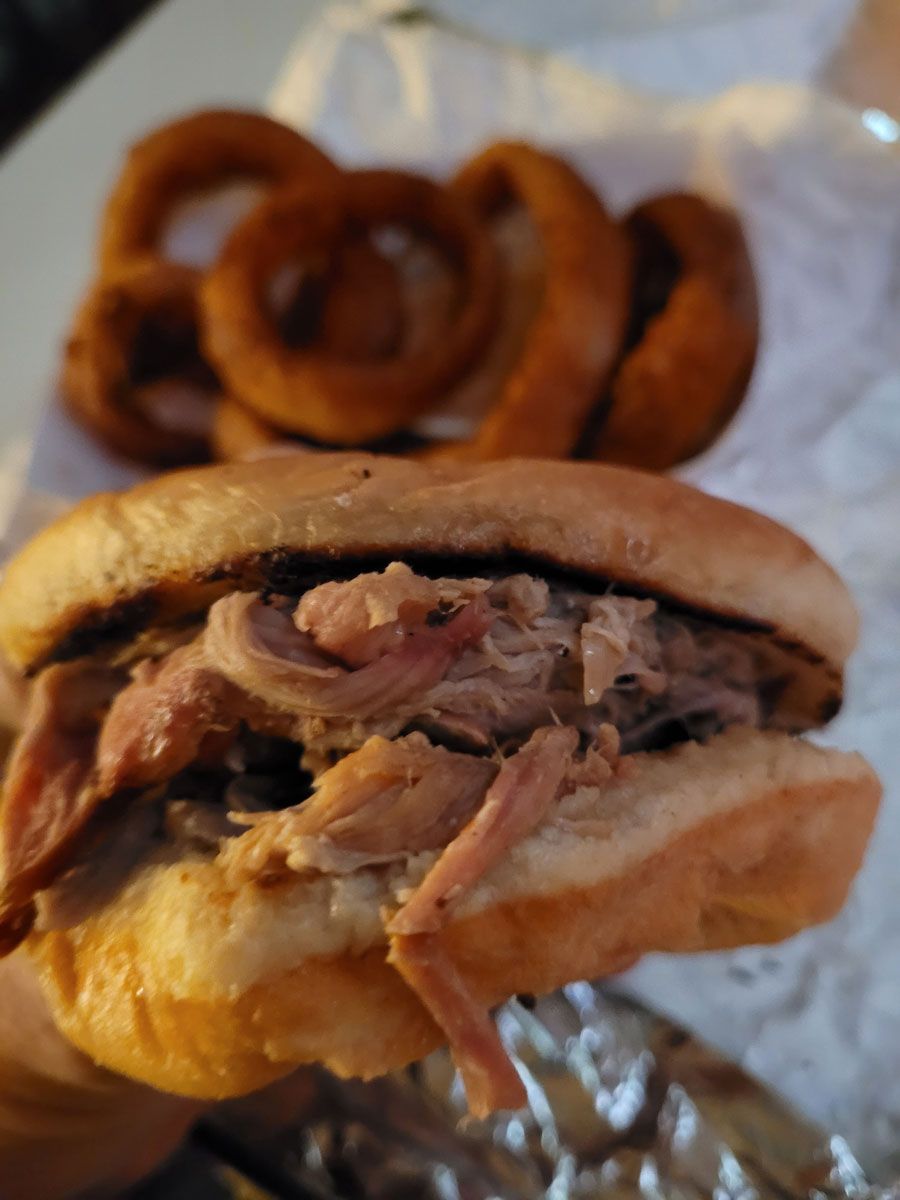
We stayed overnight at the pet-friendly La Quinta and then sped on, mercifully on dry pavement, to Port St. Joe for a quick stop at the Piggly Wiggly and short walk around the neighboring park.
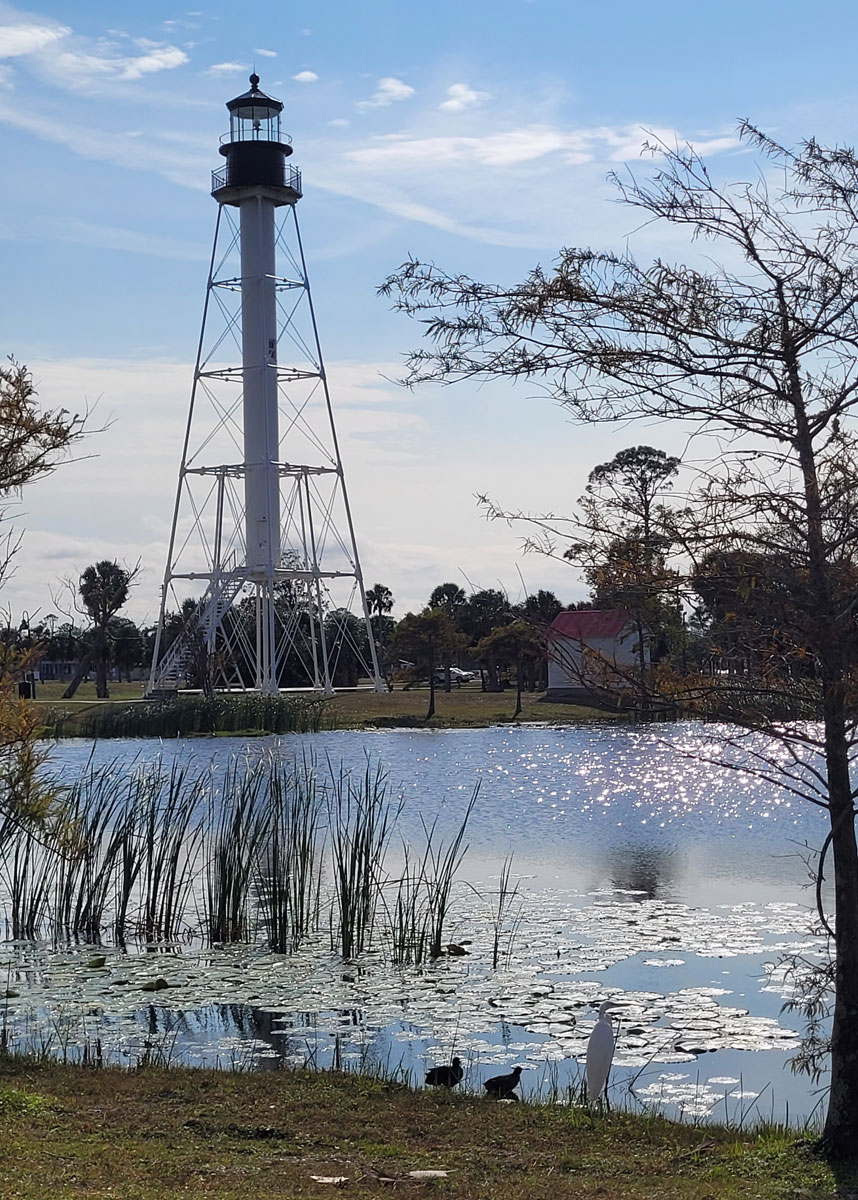
Then it’s out Cape San Blas, a narrow and often barely-above-sea-level ribbon of sand, palms, pines, and beach houses jutting out into the Gulf of Mexico. Five years and a couple of weeks before, Hurricane Michael laid waste to the nearby town of Mexico Beach.

Cape San Blas was cut through in two places. Lots of buildings were damaged and the pines that were left standing were stripped bare.
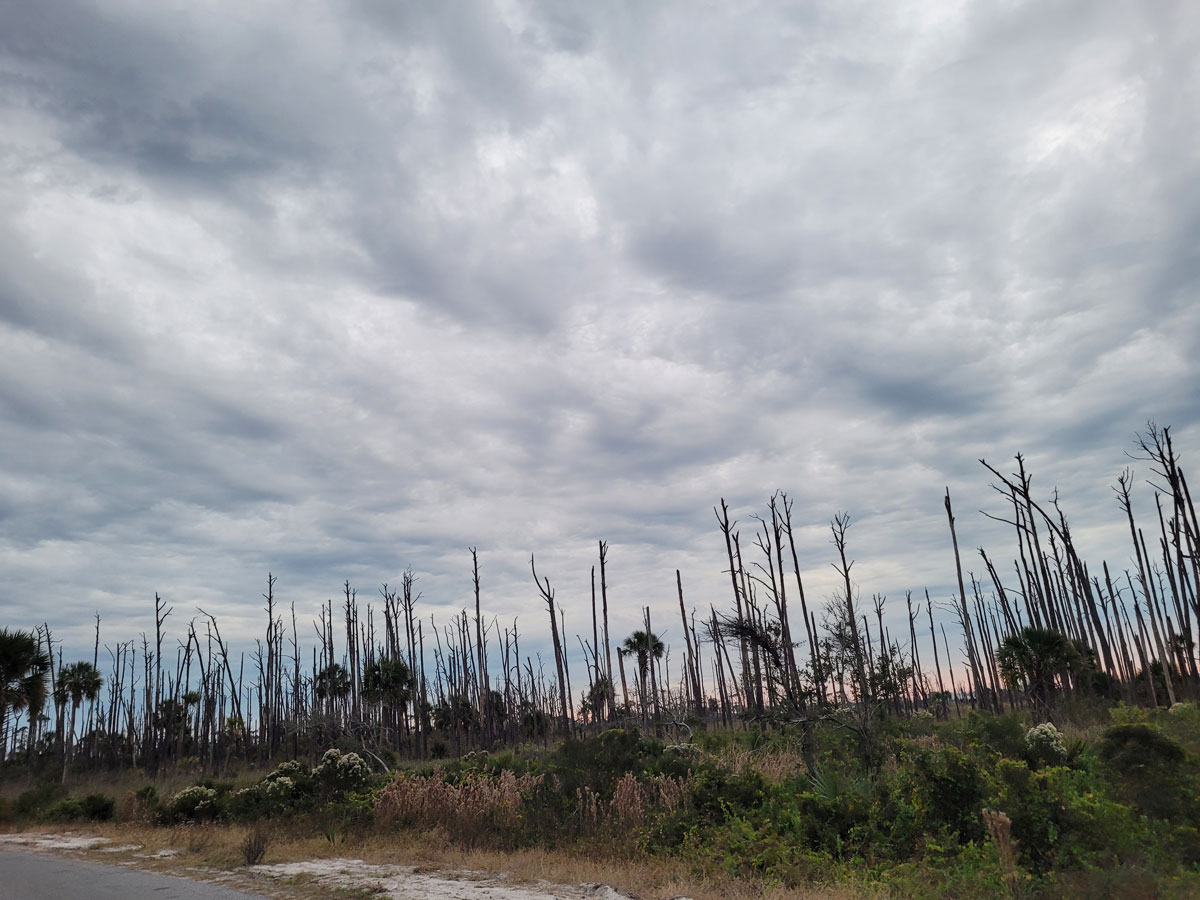
Yet the number of beach houses on the cape appears to have doubled, maybe tripled. Newer ones stand on stilts and manmade dunes are in place where the sea cut through the peninsula in two places.
As Michael barreled across the Gulf of Mexico, we were camping in the state park at the end of the cape. Coincidentally, we were packing up when the park rangers came around and evacuated the place. This review of 2018 has some now sad and amazing “before” photos. We’ve revisited the park a few times since, but the campground itself took years to rebuild and only reopened a few weeks before this trip.
What once felt like a drive into a forest now feels like a wide-open pasture. This loop is still named “Shady Pines” but there is zero shade and precious few pines. Before, sites were separated by walls of palmettos, pines and scrub oak. Now, you’re looking at every RV and tent in the campground. I was forced to listen to the Alabama-Auburn game from an RV a few sites away.
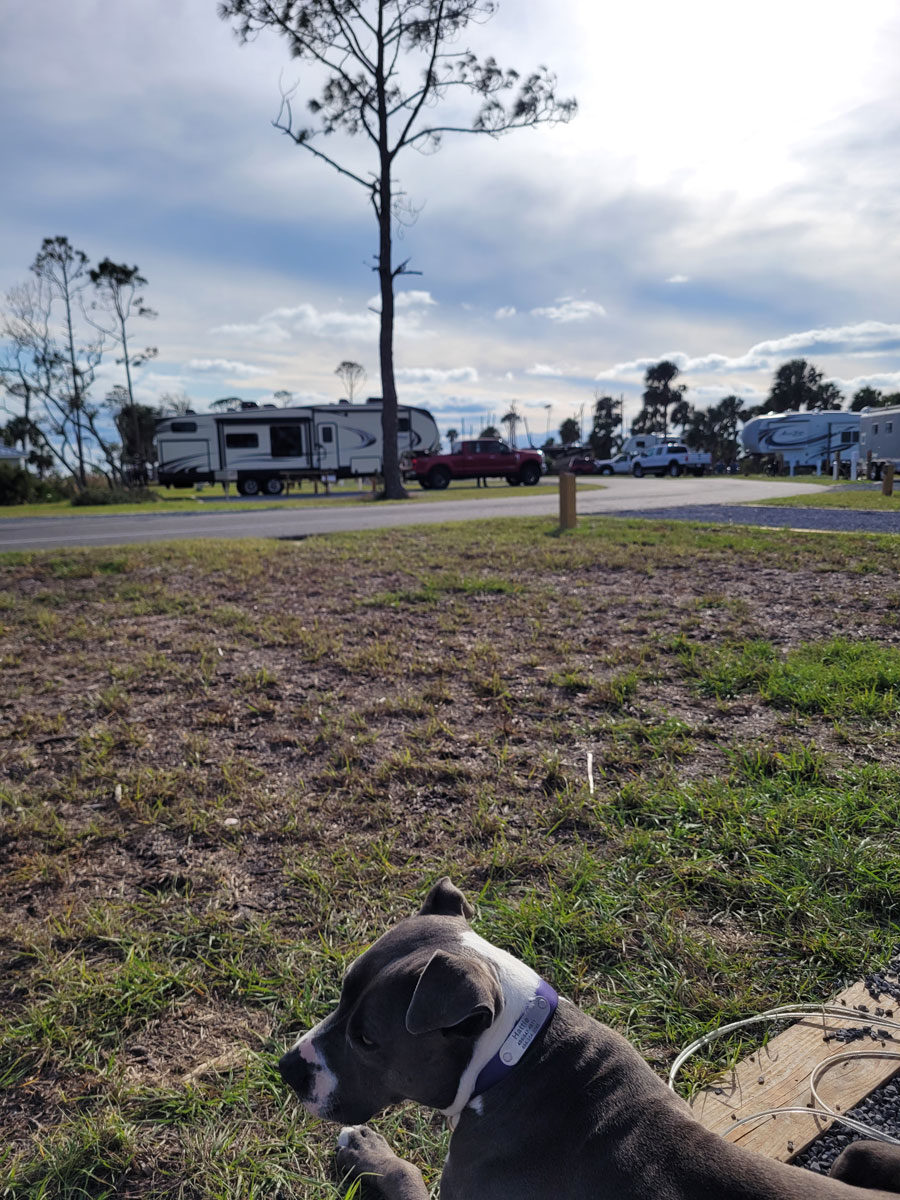
A second camp loop is under construction, overlooking the bay side of the cape, but it won’t have much more shade than Shady Pines. We have yet to ask if they’re going to let nature retake the space between sites. They have planted a handful of pines but otherwise it looks like grass is their new aesthetic preference. Even if they start planting now, it’ll be years before the campground doesn’t feel like a parking lot, maybe decades before there is shade.
The park as a whole, however, is still worth a visit – a beach of brilliant white sand and crystal blue water on one side, a bay of horseshoe crabs and sea urchins on the other, and a variety of nature trails in between.
There is one major problem: no dogs allowed on the beach inside the park. You can take your dog on leash out to the public beach along the cape, but in the park Fido can only walk on the nature trails and hang around the campground.

Therefore, nightly we had to get in the car and drive out to watch the amazing sunsets on the beach. On our first evening, chilly winds howled and waves churned.
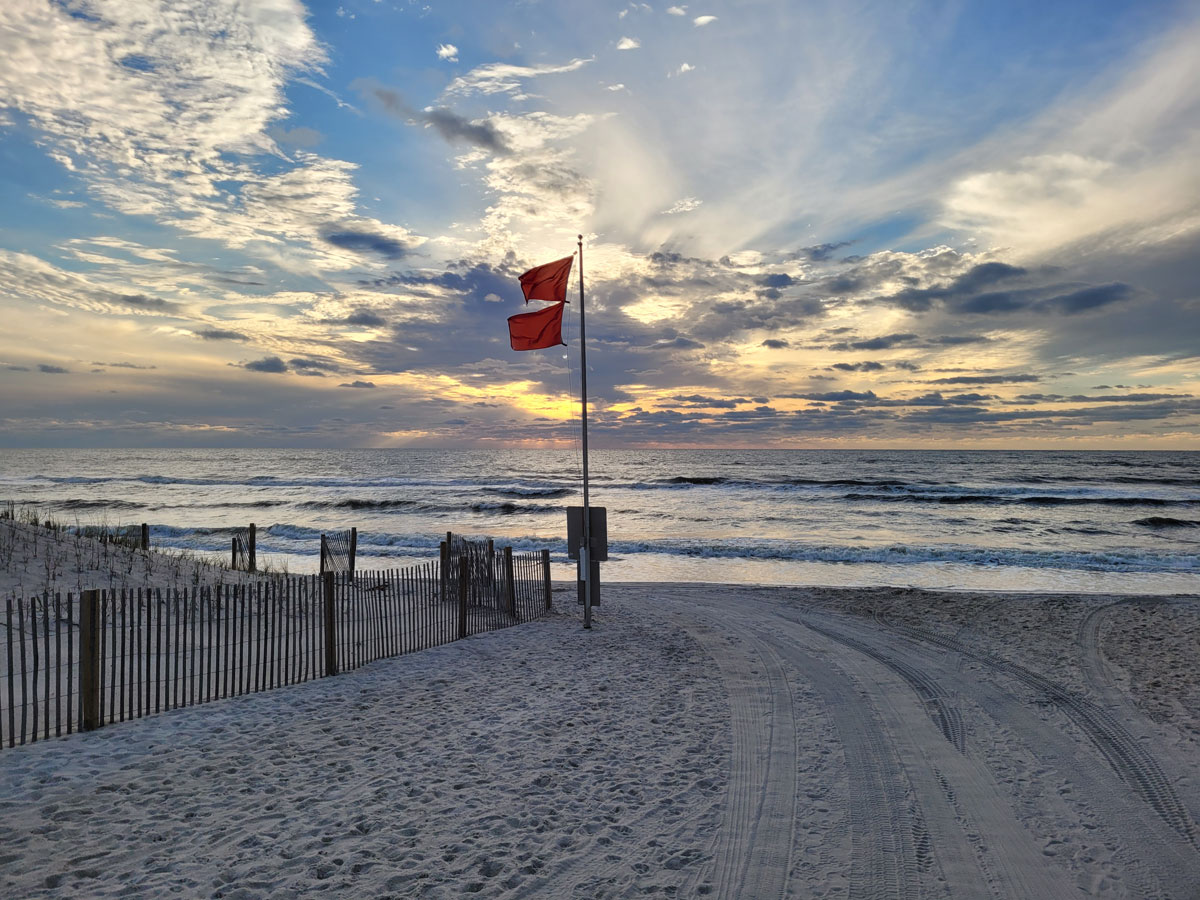

One advantage of winter camping in the panhandle is the sun sets so early you can make dinner after, including getting the fire going, and eat by 8PM.
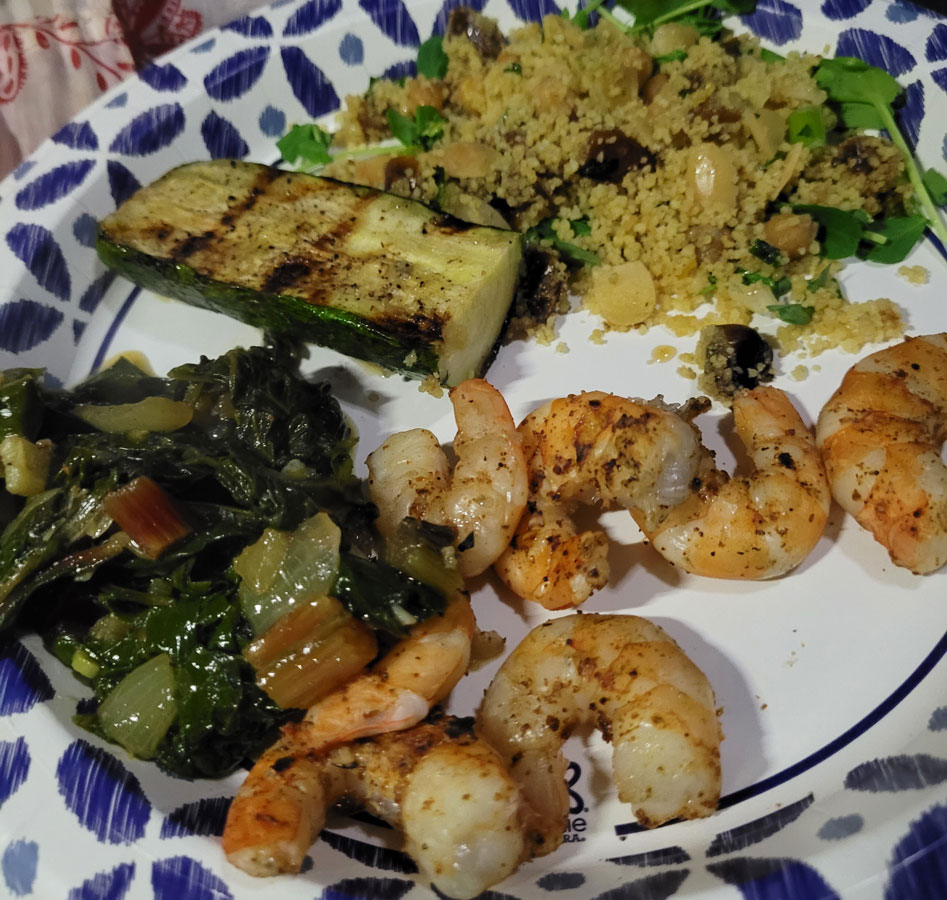
We took a picnics out the nature trails, gawking at the twisted, stripped trees. A big chunk of the park had been turned into an island after Michael, but eventually nature closed the cut. Plants are thriving. We saw many deer, a bobcat, and the usual plethora of sea birds. There are still a few scrub oaks and other trees, particularly on the lee side
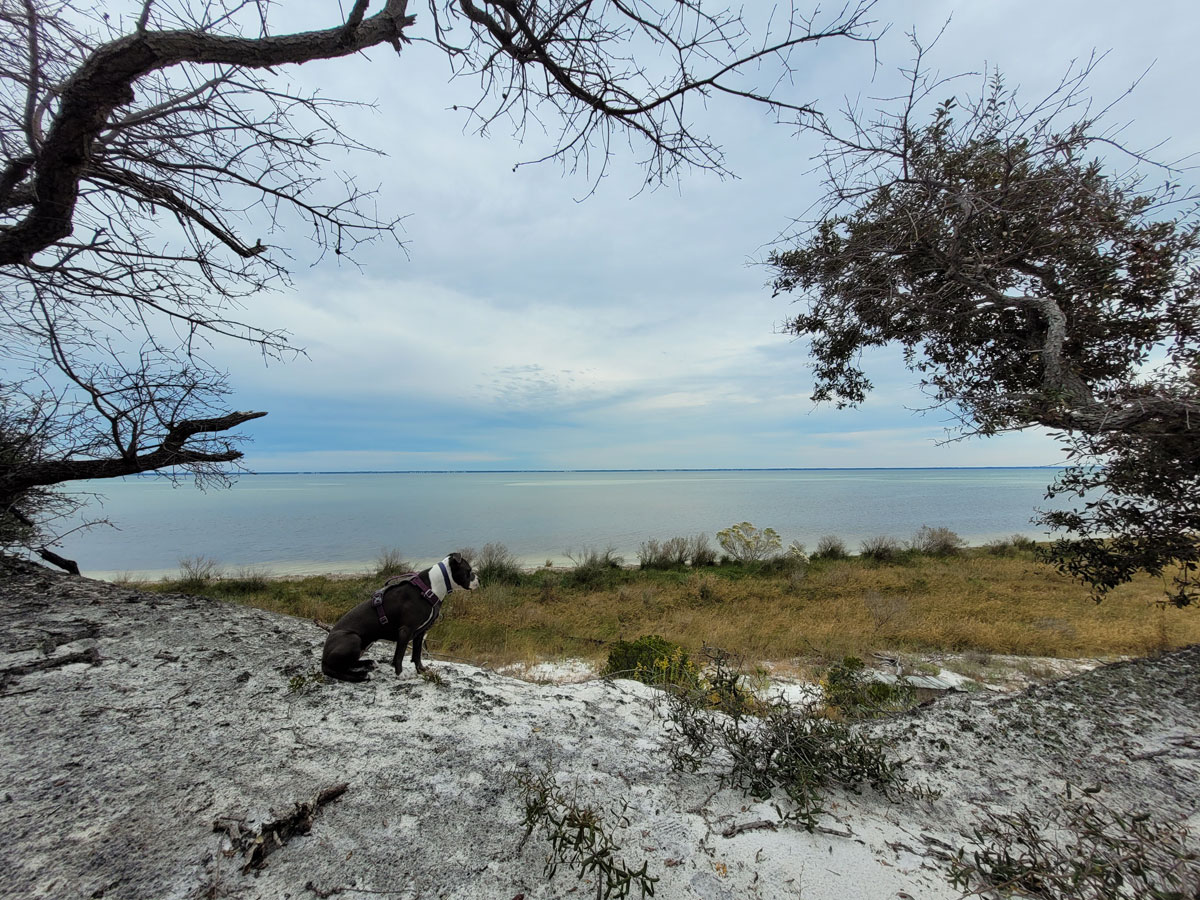
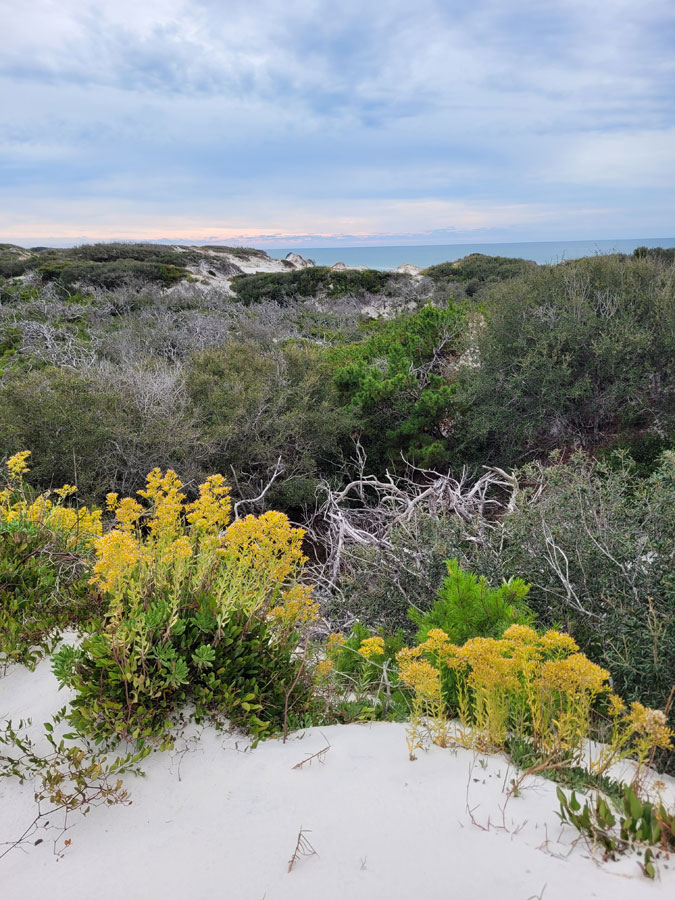
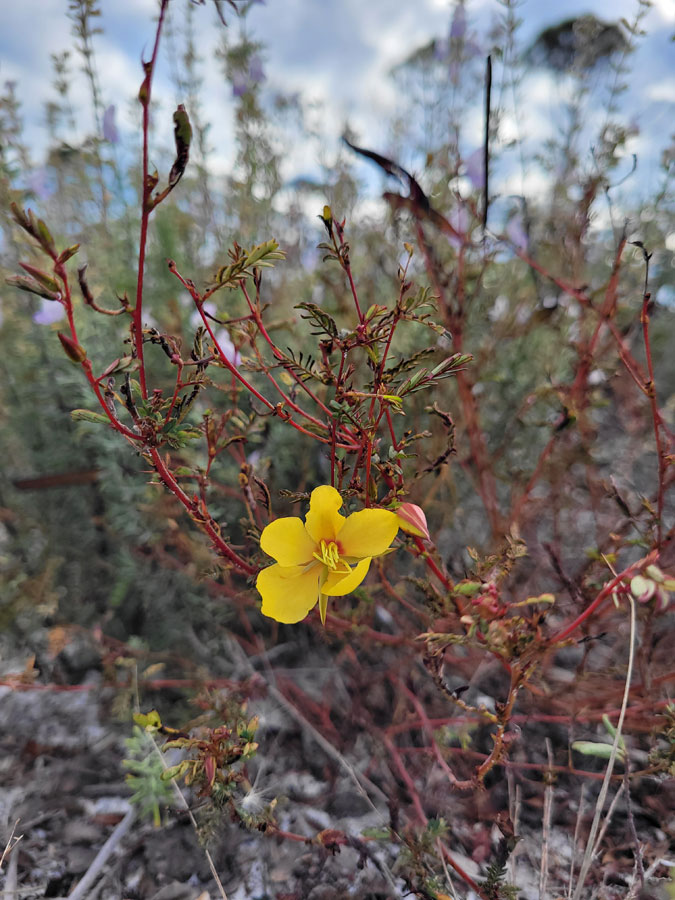
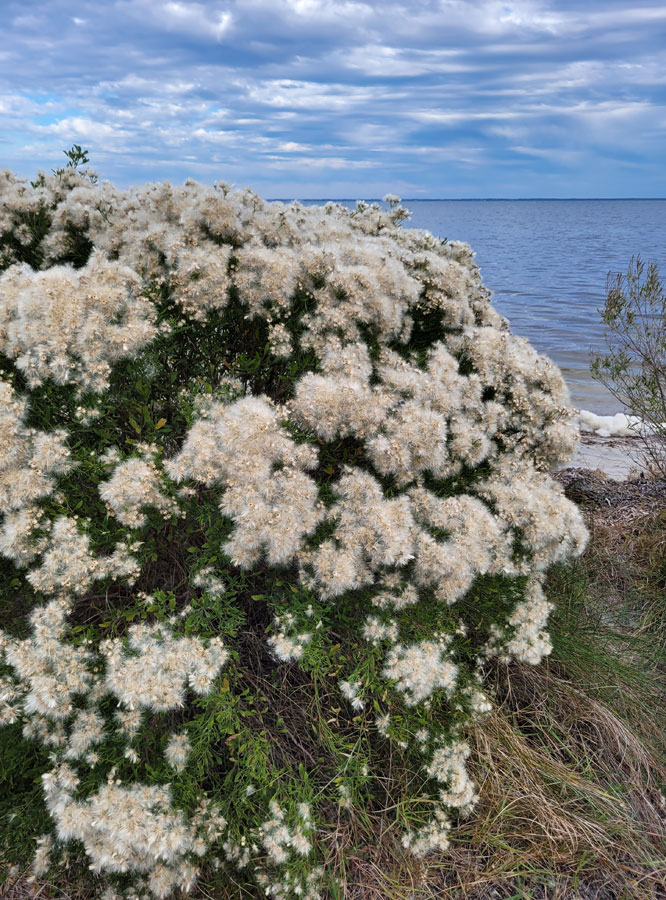
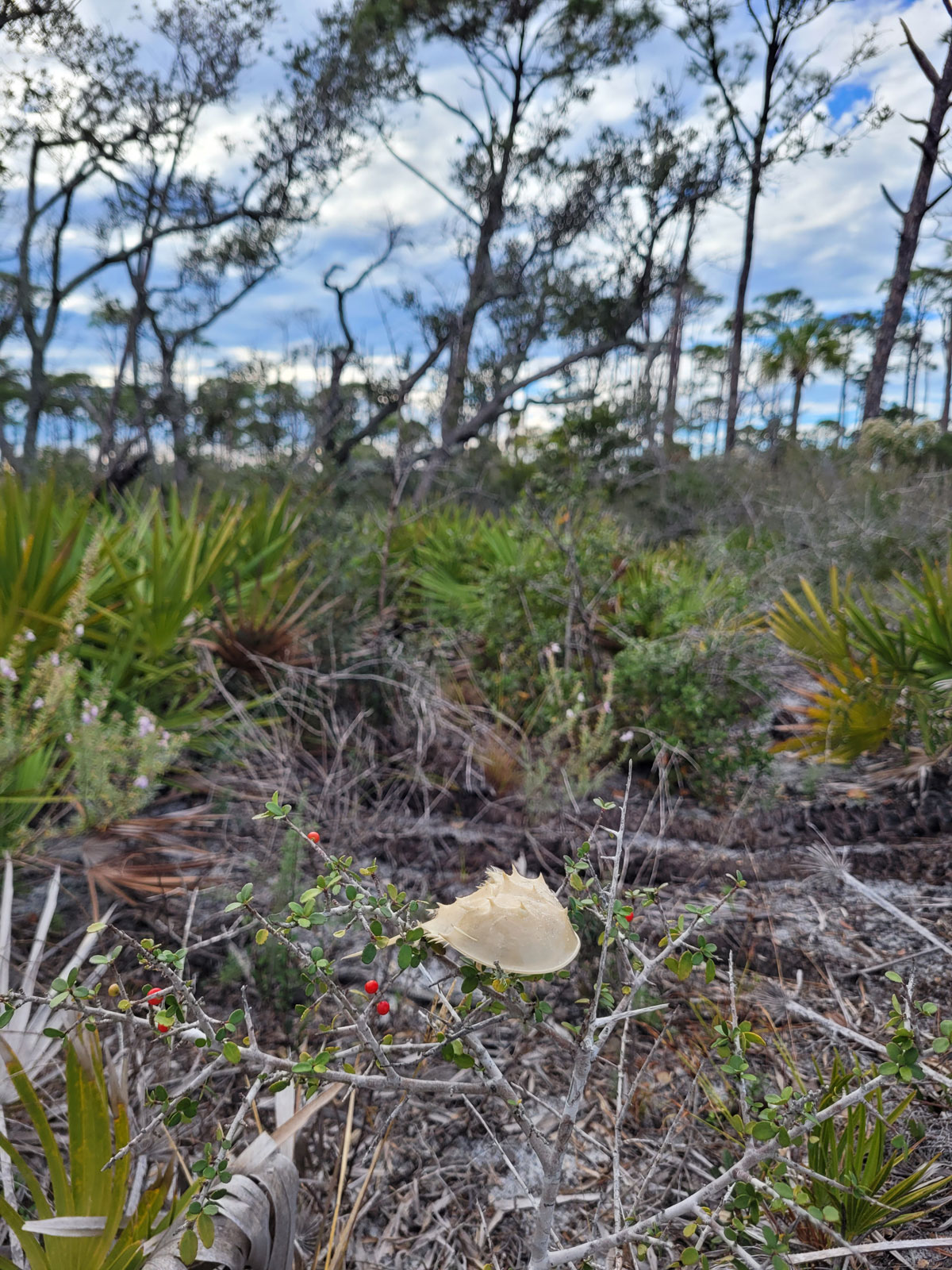
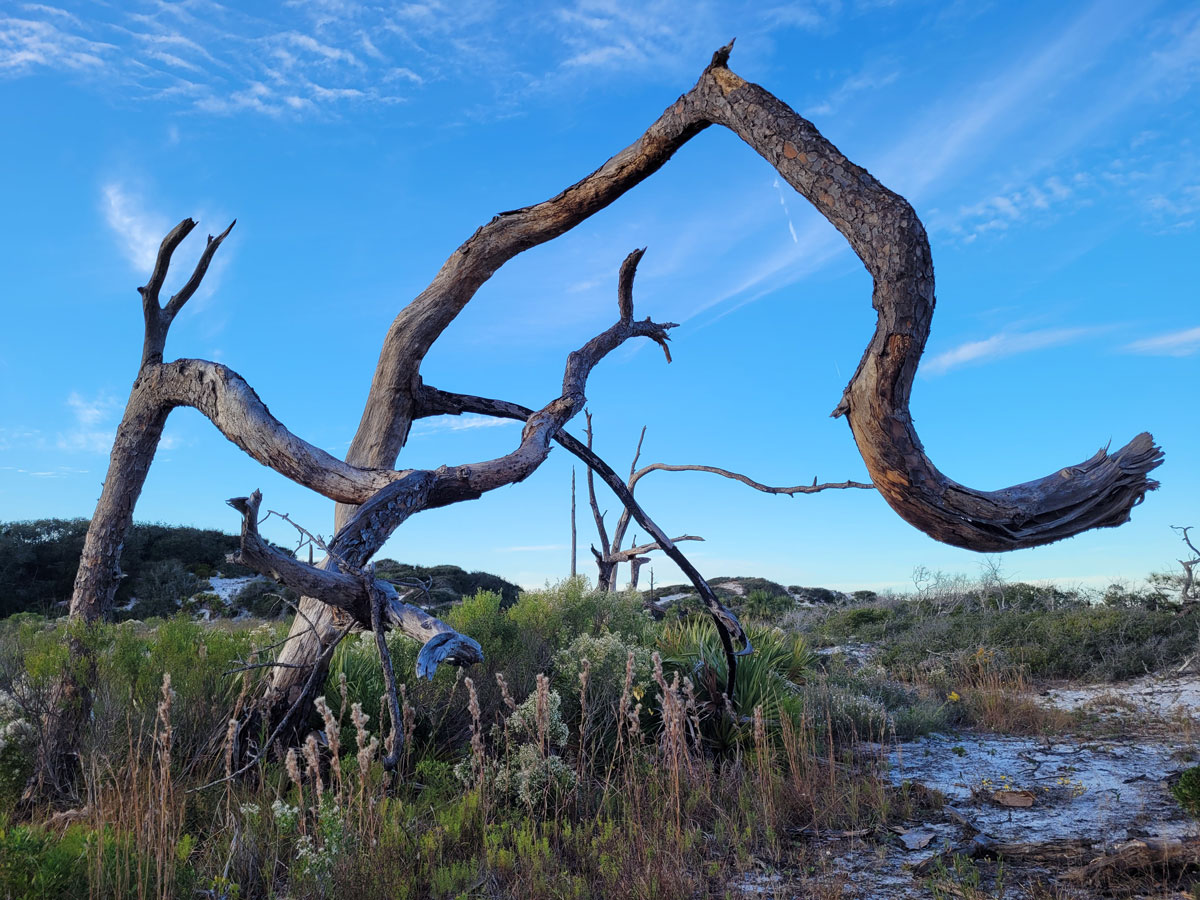
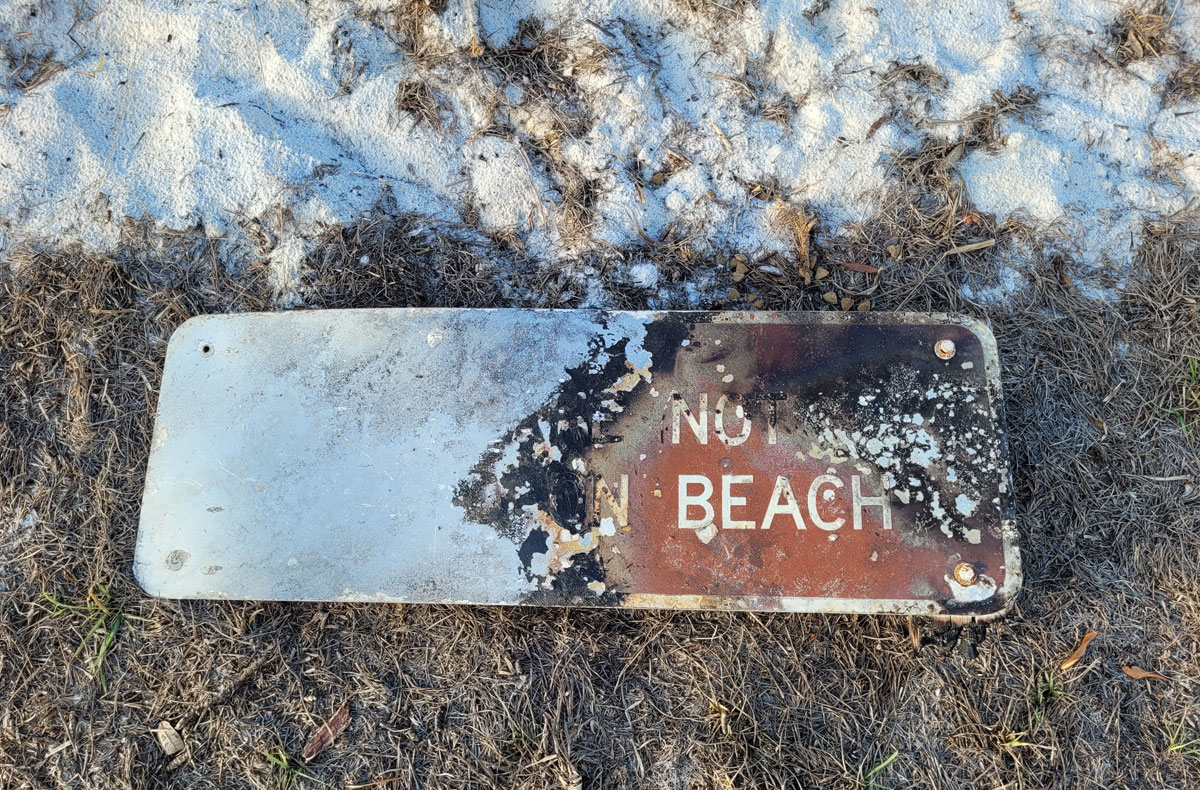
Check out this panorama of the former forest interior (click, zoom, pan.) Out on the beach, we were treated to an intensely purple sunset, followed by another delicious meal back at camp.

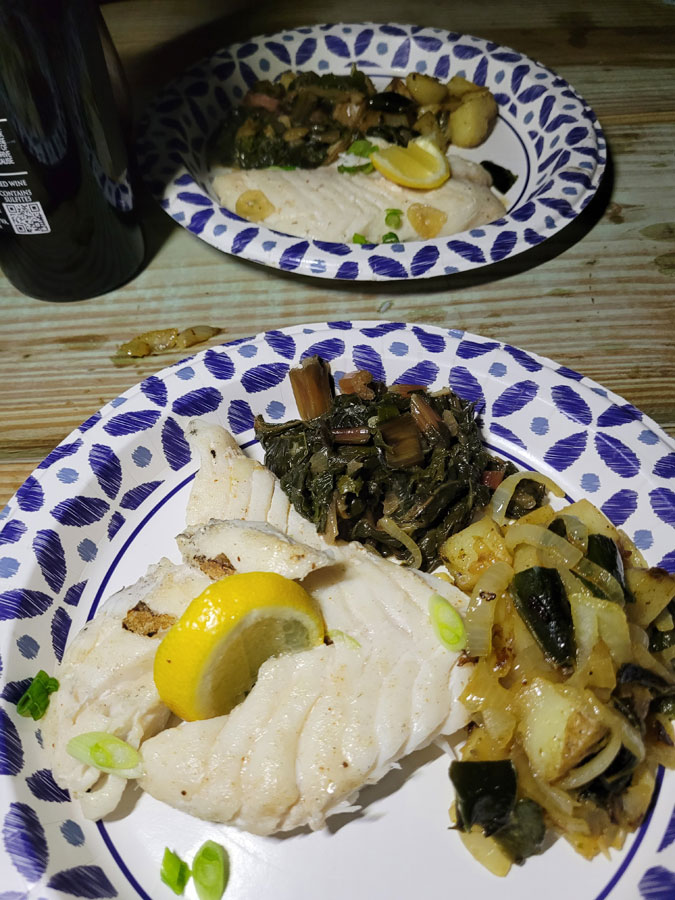
The Trading Post is the closest store to the state park. It’s an incredibly well curated shop, with an attached liquor store, and a couple of booths out front, one for iced cream and coffee, the other for hand made donuts when the old couple is around to do so. Alas, we missed the donuts and had to make due with biscuits from the Trading Post. Decent!

If you’re in the mood for donuts and the old couple aren’t there, head into Port St. Joe for Sweet Bunz – if you can get there before they sell out of everything.

This was all so we didn’t have to make breakfast ourselves before a day trip, visiting St. George Island for a walk along the inland waterway.
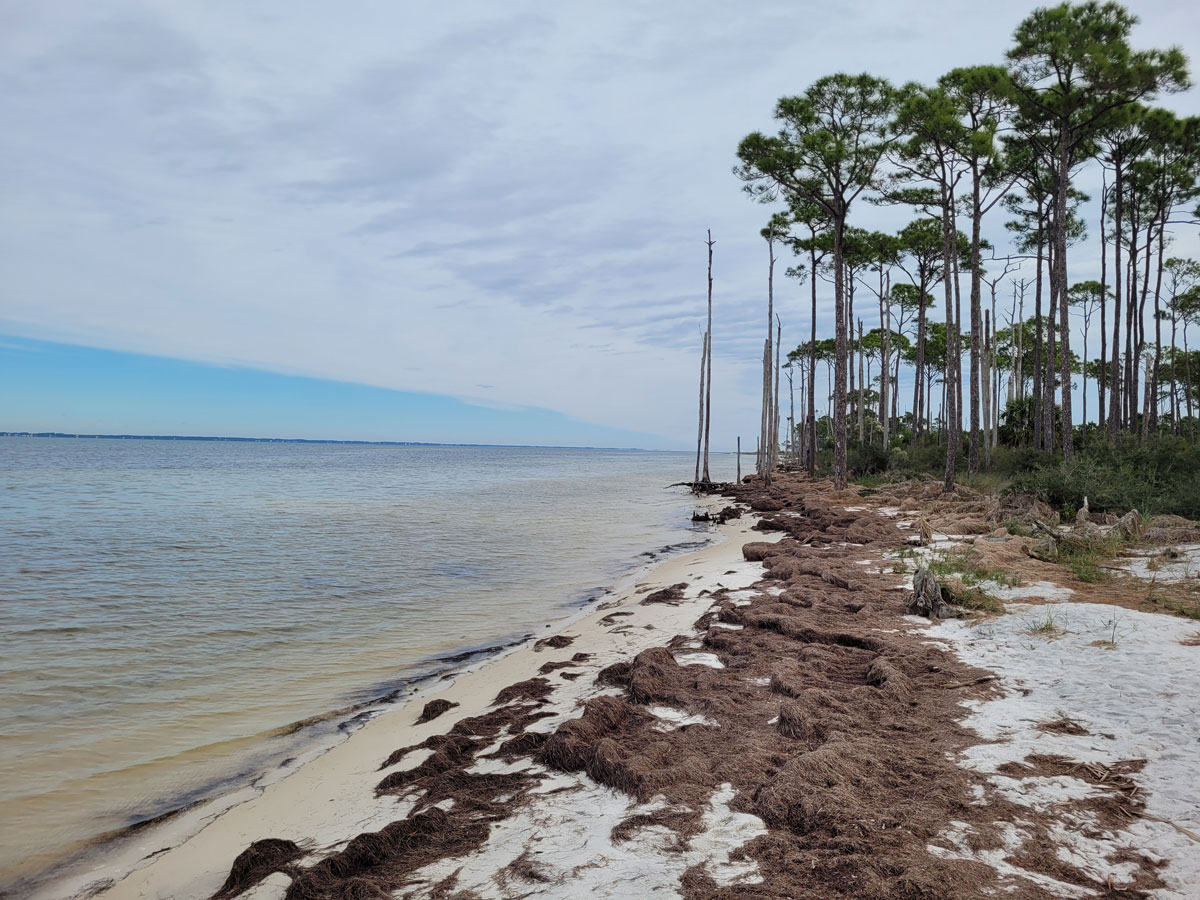
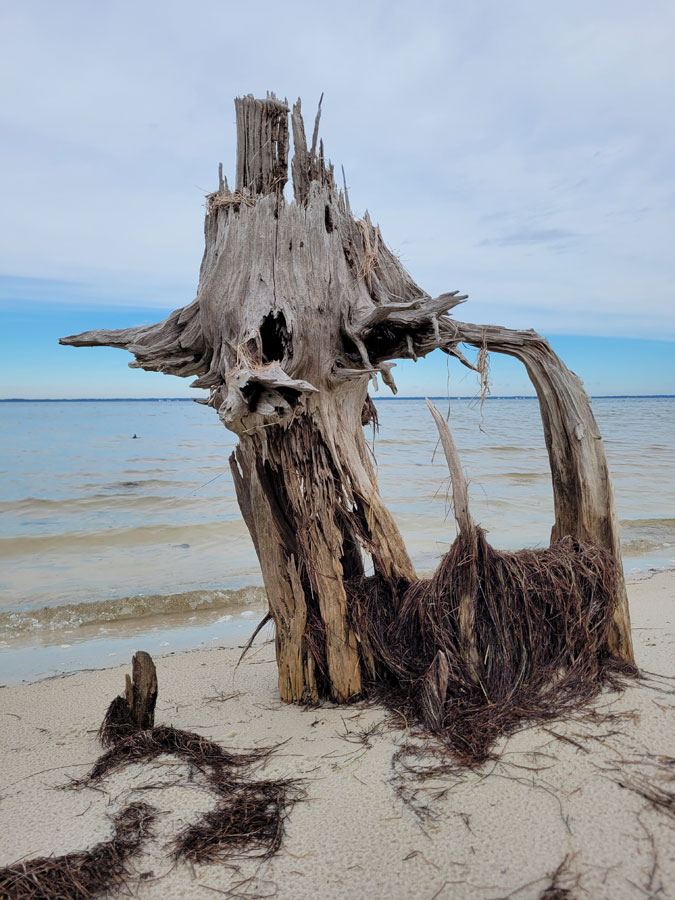
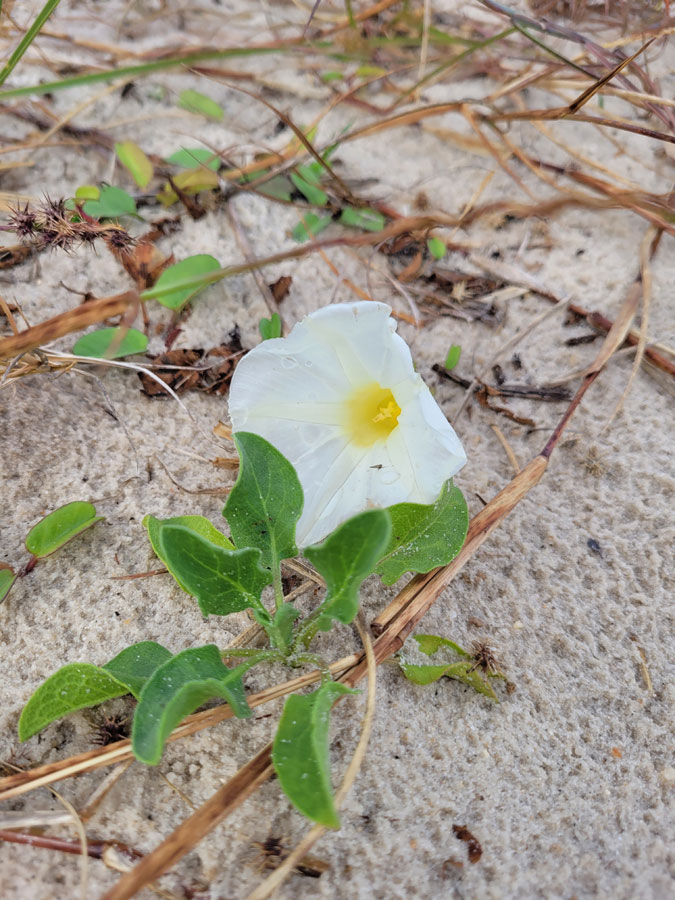
We went into St. George proper and walked the dog on the beach (again, not allowed on the island’s state park beach), wandering past the lighthouse en route.
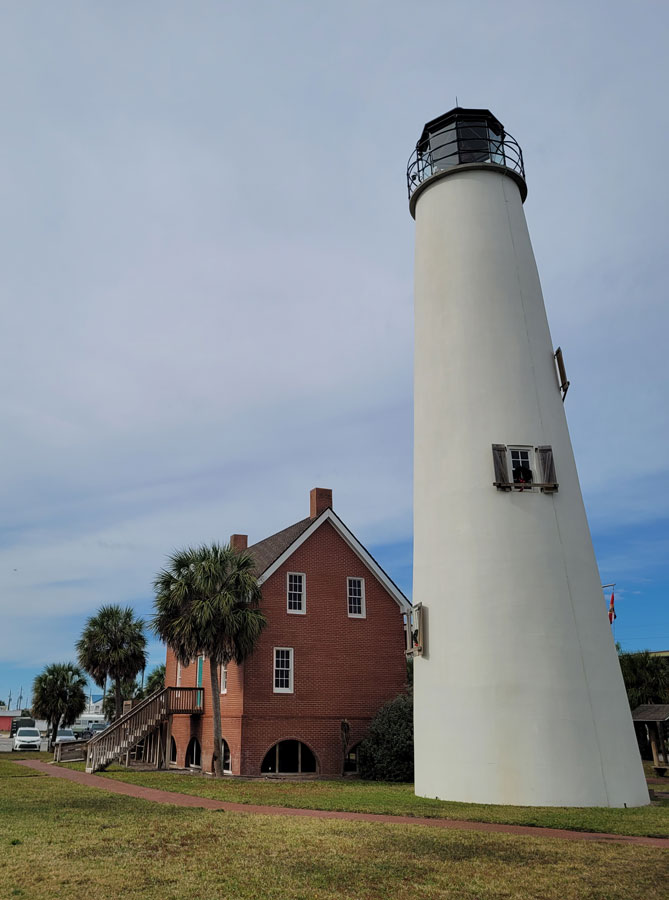
Apalachicola is another favorite stop in the area, thanks to super cute shops, a good brewery, and Up the Creek Raw Bar.
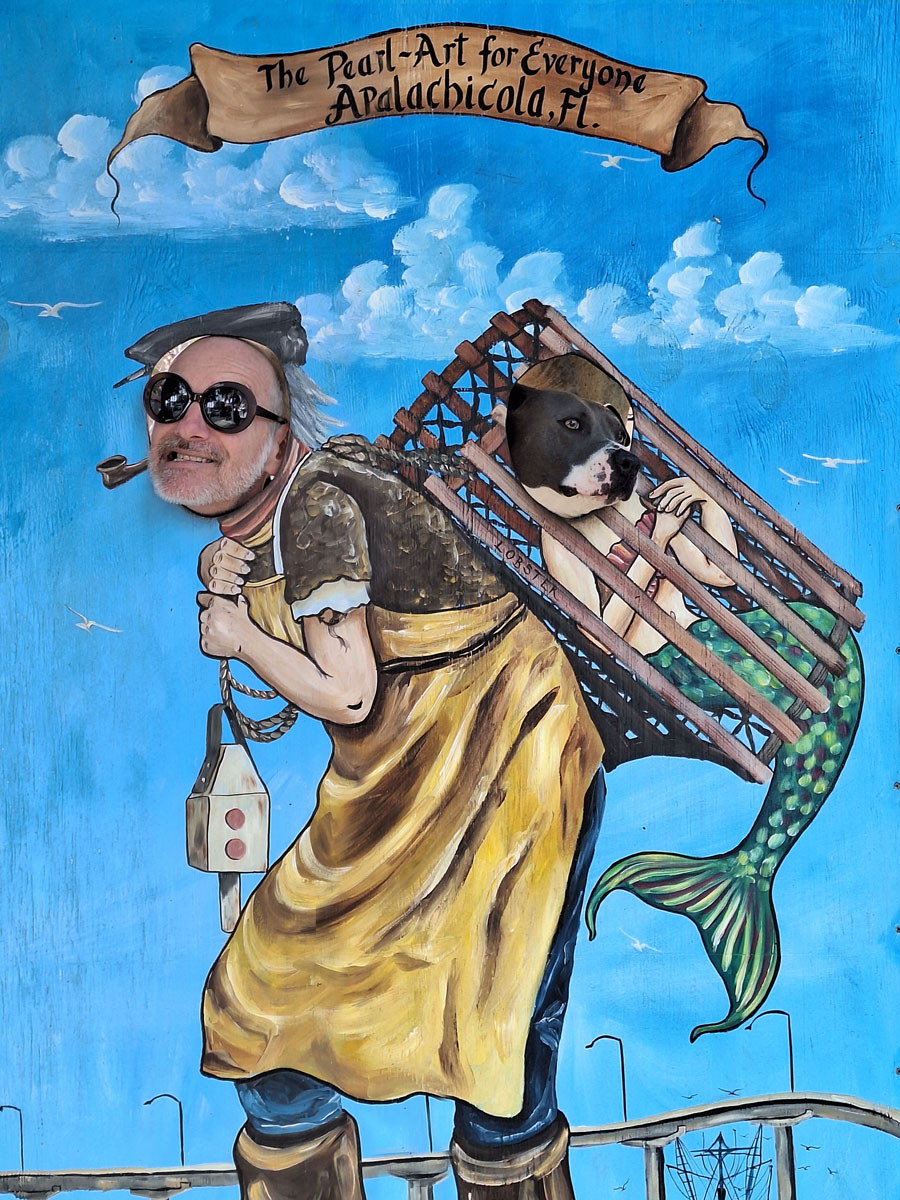
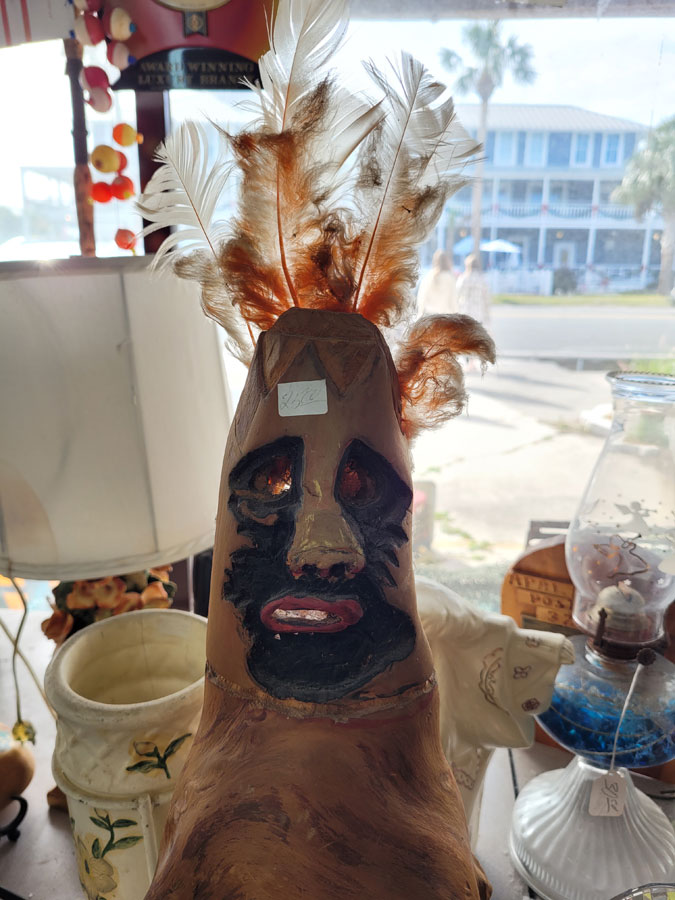
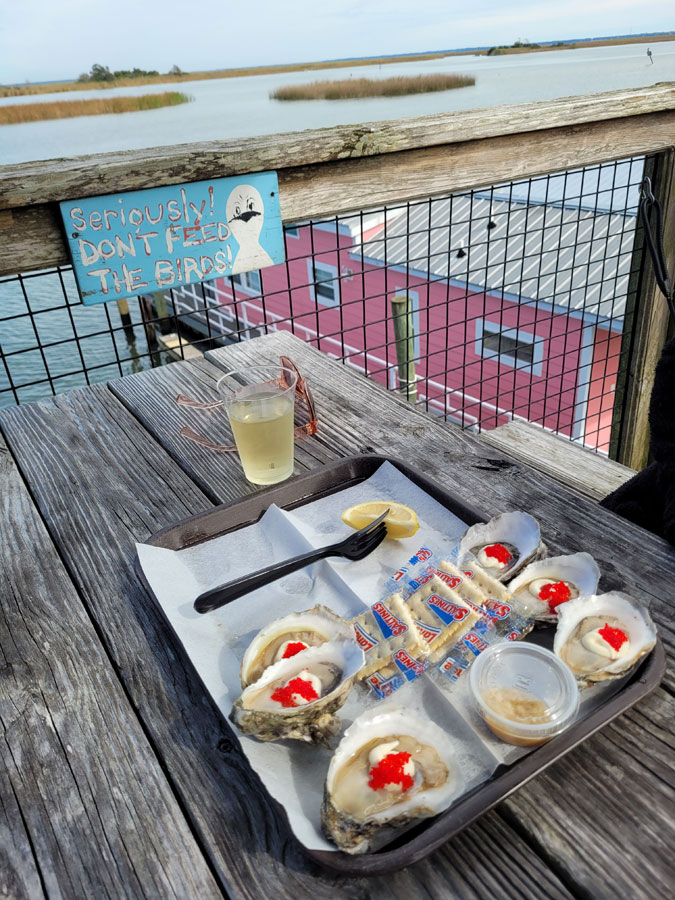
Followed by yet another amazing sunset and meal at camp.
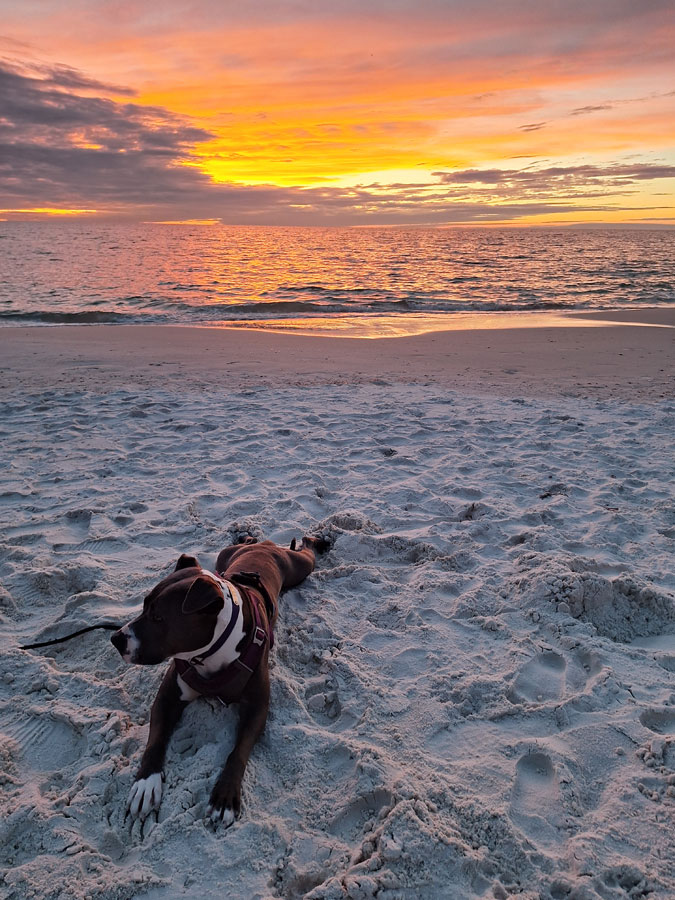
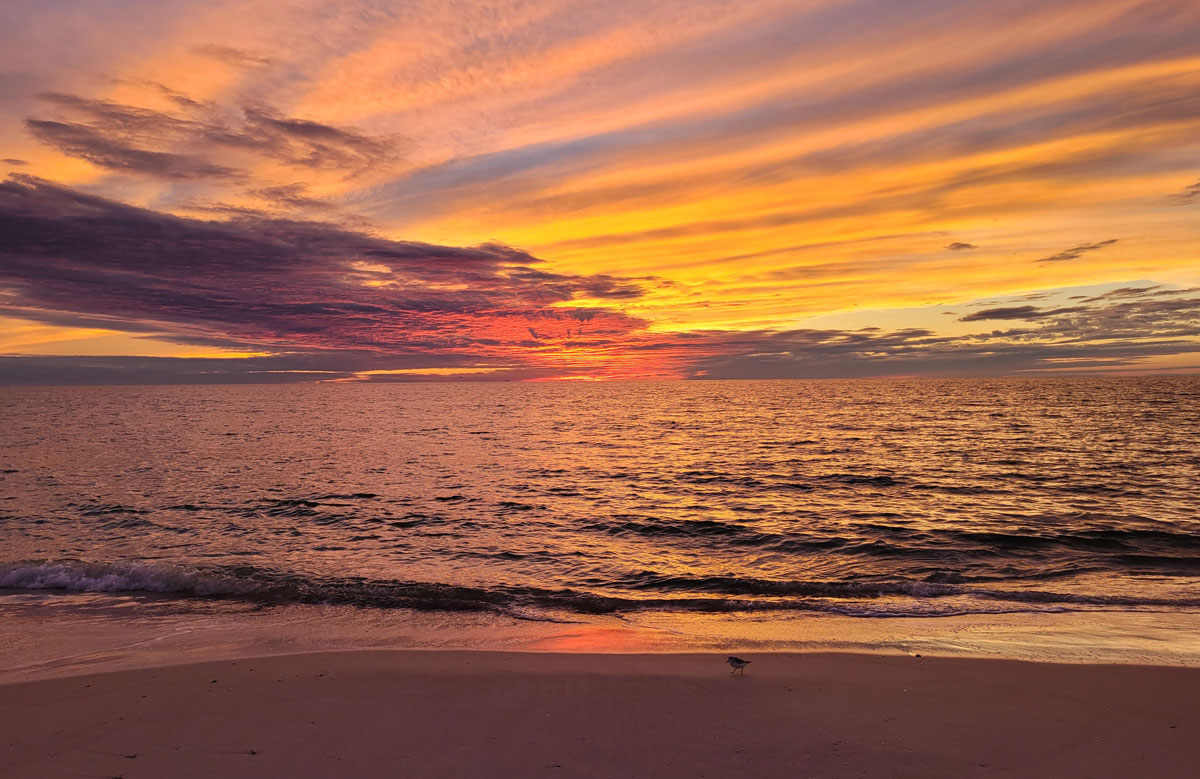
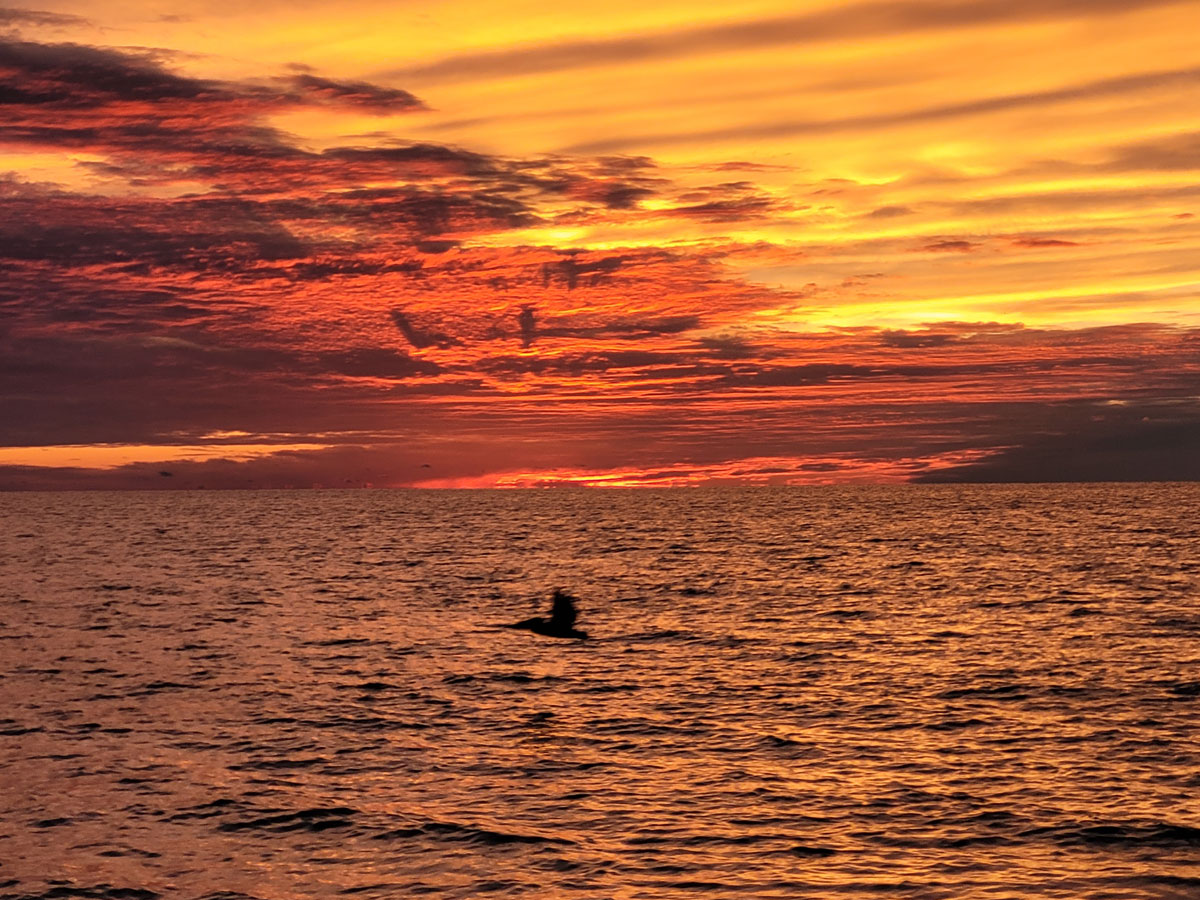

A few sites down, someone was projecting a movie on a big screen (Matilda, from 1996.) This is almost the exact same spot as our former group camp where we, too, would show films.


The next day, we trekked out to Indian Pass, a little spur just east of Cape San Blas. The beaches there aren’t quite as pretty – the sand not so white, the sea not so blue – so we retreated back to the cape.
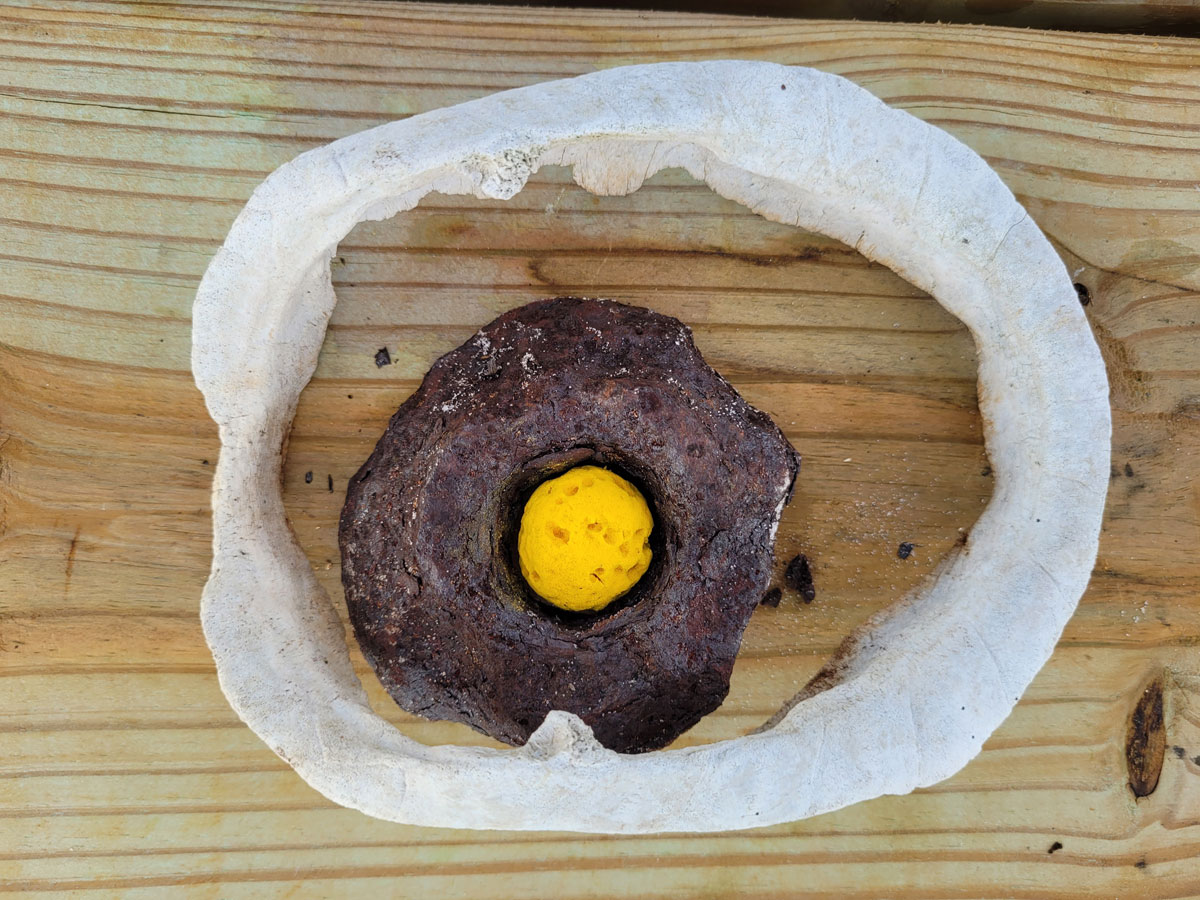
On one of our walks, maybe our most memorable moment occurred – Hattie jumped the shark. Literally. She found a dead hammerhead on the beach and rolled around in it. Fun!

Speaking of dead aquatic things, here’s a stingray and our last sunset. Also, dead shrimp.

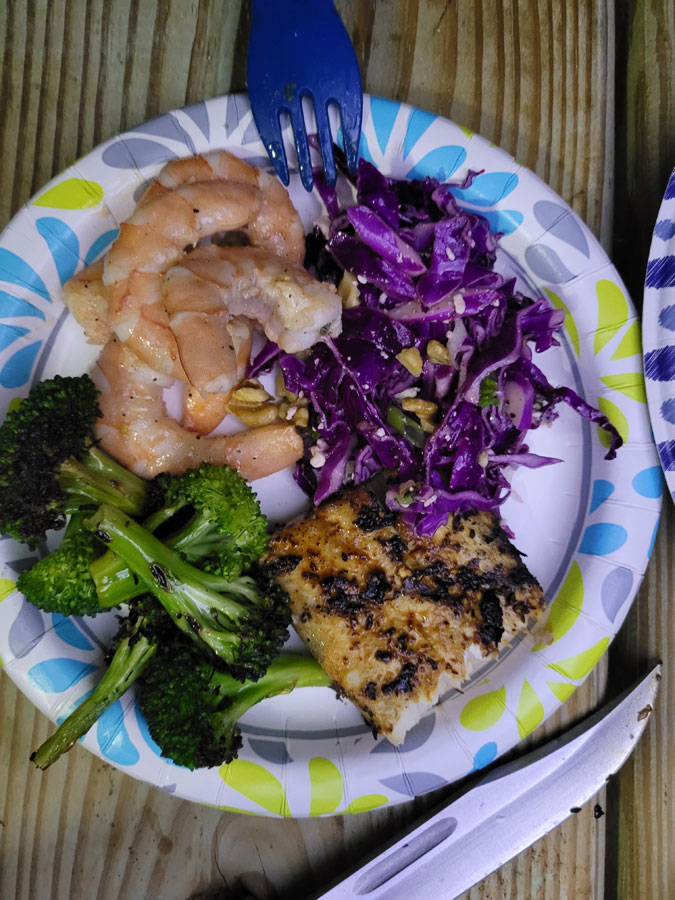
The drive home was a repeat of the drive down, all wind and rain and the car sliding all over the road. The front that created them brought winter with it, so I’m writing this while lurking close to a space heater, wearing many layers of clothes. Why did I leave the beach?!?